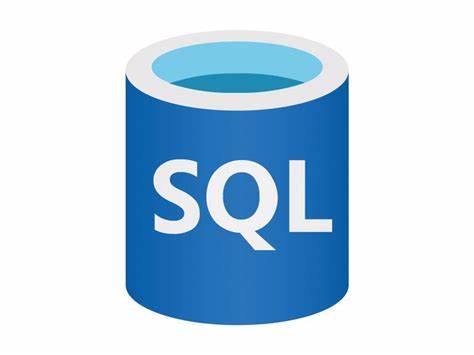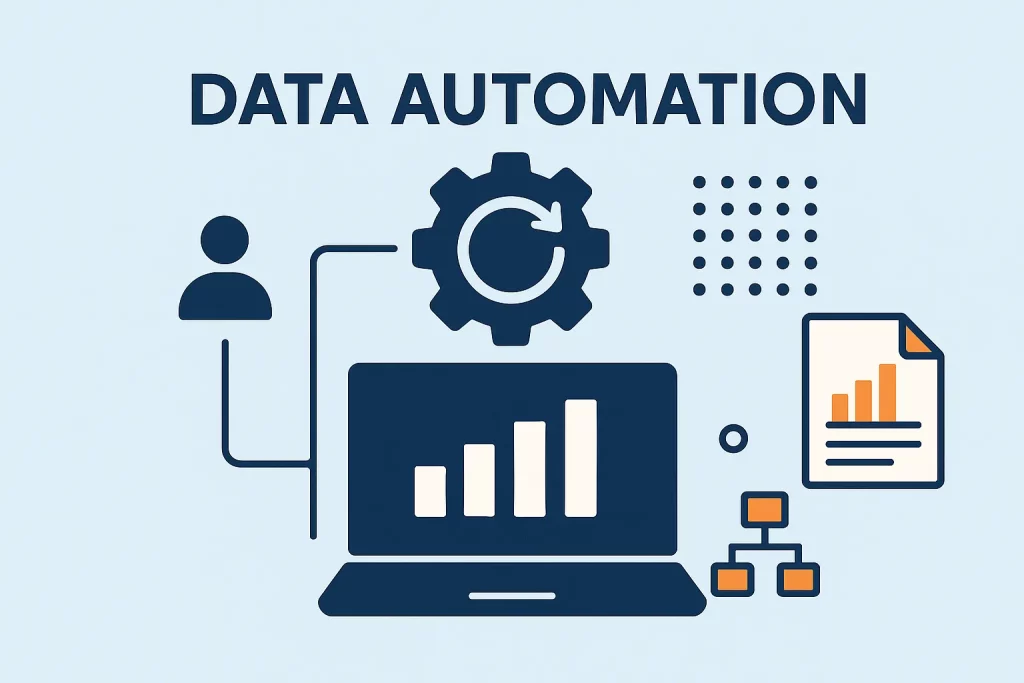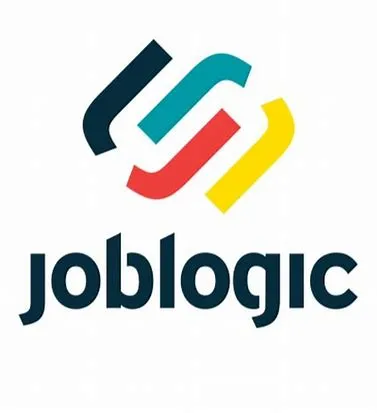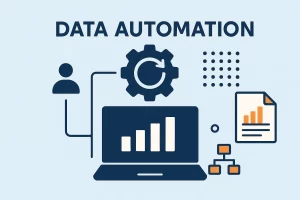Case Study: Linaker Timesheet Processing Transformation
Using Joblogic integrations and Power BI, Linaker transformed how it manages timesheets
The Operational Challenge
Linaker approached us in 2023 seeking advanced data solutions to streamline operations and eliminate inefficiencies in their payroll process.
Although they were using Joblogic software effectively for field management, their overtime payments still relied on manual, paper-based timesheets — a process that was labour intensive, time consuming, and error-prone.
The initial requirement was to implement Joblogic integrations and build an automated timesheet processing system to replace manual data entry and ensure calculation accuracy. This involved extracting field data directly from Joblogic and integrating it with internal payroll data for streamlined processing.
Initially, the brief focused on using Power BI dashboards to calculate overtime based on engineers’ start and end times. However, the challenge soon revealed deeper complexities — including a need to reflect varying contract terms, custom overtime rules based on travel hours, and premium work periods.
Key data sources included Joblogic reports, Excel-based payroll data, and on-call rotas. A robust data integration was essential to unify these datasets and manage the sophisticated logic required for accurate overtime calculations.
Whatever stage of your data journey you’re at, we can help.
We took a four-step approach to consolidating the data:
Joblogic Integration:
The first step was to implement seamless Joblogic integrations to extract key operational data directly from Linaker’s field service management system. This data formed the foundation of a fully automated timesheet processing workflow.
We began by identifying and aligning the business rules for overtime calculation — taking into account non-productive hours, on-call shifts, and varied employment contracts. During this stage, we uncovered a number of data integrity issues including jobs left open, overlapping time records, and inconsistent team assignments. Additionally, the system didn’t account for irregular working patterns or gaps during on-call availability.
A collaborative workshop helped refine the technical requirements and data logic, resulting in a clear set of rules for handling exclusions, resolving errors, and managing complex pay scenarios. These rules formed the basis of a scalable data automation pipeline that would feed into subsequent reporting and analysis layers.


Building the Data Architecture
With the integration rules in place, the next phase focused on consolidating data through a robust, scalable data warehouse architecture built on Azure. We adopted a Medallion architecture approach to structure the data into bronze, silver, and gold layers — supporting both data quality and performance.
- The bronze layer handled raw data ingestion with automated daily refreshes from Joblogic integrations, Excel-based payroll files, and on-call rotas.
- Validation rules were applied to detect and filter out anomalies, including duplicate or incomplete records and misaligned shift times.
- Cleaned data was moved to the silver layer, where we introduced dimension tables (e.g., employee profiles) and fact tables (e.g., time logs and overtime calculations) to support efficient automated payroll data processing.
- The gold layer aggregated this information for streamlined reporting in Power BI, ensuring faster query performance and high data reliability.
This structured Azure data integration allowed for accurate, real-time calculations and significantly reduced the manual overhead traditionally associated with payroll processing.
Reporting with Power BI
Once the cleaned and validated data reached the gold layer, we developed a suite of interactive Power BI dashboards tailored for multiple user levels across Linaker.
The data model enabled granular analysis of engineer performance, overtime trends, and operational KPIs. Users could drill down into overtime hours by individual, team, or time period, helping management uncover insights and act on inefficiencies in good time.
We also created a framework for facilities management reporting at board level. These strategic dashboards highlighted high-impact metrics, including:
- Weekly and monthly overtime levels
- Engineer travel time as a percentage of total hours
- Underutilised hours across teams
- Contract-specific overtime cost breakdowns
These reports provided decision-makers with actionable insights and a holistic view of workforce productivity — all updated automatically with daily data refreshes.


Automating Timesheet Processing
The final step was to fully implement automated timesheet processing, ensuring that Linaker’s new system could run end-to-end with minimal manual oversight.
All data pipelines were scheduled to execute on a daily refresh cycle, pulling updated records from Joblogic, Excel payroll sheets, and the on-call rota system. Automated validation checkpoints ensured that any anomalies — such as missing shifts, duplicate entries, or unusual hours — were flagged for review before entering payroll calculations.
To support business continuity, we embedded automatic failure notifications to alert key stakeholders if any stage of the process failed. This helped ensure prompt issue resolution and protected the integrity of payroll outputs.
By combining robust payroll automation with dynamic alerting, Linaker’s operations team gained a dependable system that ensured accuracy, reduced administrative burden, and supported real-time decision-making across the business.
Results and ROI
The implementation of automated timesheet processing delivered measurable improvements across Linaker’s operations — far exceeding the initial goal of simplifying overtime calculations.
By removing the need for manual data entry from paper timesheets, the company significantly reduced administrative effort and improved payroll processing accuracy. This led to substantial cost savings from payroll automation, and more efficient resource planning.
Staff satisfaction also saw a notable uplift, thanks to consistent and error-free payments, which eliminated delays and disputes. Engineers experienced a more reliable and transparent system that aligned with contractual expectations, contributing to higher morale and retention.
Strategically, Linaker’s leadership gained access to real-time Power BI reporting and engineer performance dashboards, allowing them to make informed decisions based on timely, accurate data.
The project not only solved a key operational challenge — it introduced a scalable framework for long-term digital transformation in facilities management.

What do our clients say?
Responsive Analytix opened our eyes to the possibilities within our data.
he information he helped us access allowed us to make informed strategic decisions we couldn’t make before.
“His help was crucial in digitising part of our timesheet process, which freed up two full-time positions in our accounts team and increased our engineers’ productivity. They also created management reports that are used at board level every month.
For any SME that has untapped data that could transform their business, Responsive Analytix is absolutely the company I’d recommend.”
Jennie Davies, Performance Director, Linaker
Are manual processes slowing down your operations and costing your business time and money? At Responsive Analytix, we help organisations like Linaker unlock the full value of their operational data through tailored solutions like automated timesheet processing, Joblogic integrations, and Power BI reporting dashboards.
Whether you’re managing a mobile engineering workforce or running complex payroll scenarios, our team can design a scalable system that increases accuracy, improves staff satisfaction, and delivers real ROI.
Ready to streamline your operations with data-driven automation? Contact us today to discuss how we can help you simplify processes, reduce costs, and gain deeper insight from your data.
When we take your project on, we’ll slot seamlessly into your team, working alongside them and sharing information at every stage.
Ready to take control of your data?
Whether you’re drowning in spreadsheets, struggling with system integrations, or simply know your data could be working harder for your business, we can help.
If you’d like to know more about how we could transform your company’s data management get in touch.
Learn about our other success stories




